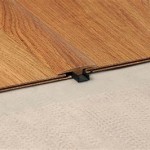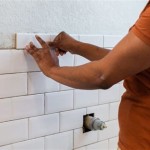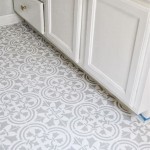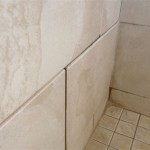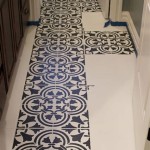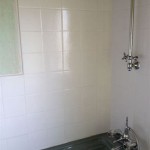How To Remove Shower Tiles Without Breaking Them
Removing shower tiles without causing damage is a delicate process, often requiring patience and the right tools. While achieving a 100% success rate is unlikely, employing the correct techniques significantly increases the chances of preserving the tiles for reuse or simply minimizing debris and damage to the surrounding surfaces. This article provides a comprehensive guide to the methods and strategies involved in carefully removing shower tiles.
The primary challenge in removing shower tiles lies in the strong adhesive bond between the tile and the underlying substrate, typically cement board or drywall. Grout, acting as both a sealant and a structural element, further secures the tiles. Therefore, the process involves weakening the grout, carefully separating the tile from the adhesive, and minimizing the stress applied to the tile itself.
Preparation and Safety
Before commencing any tile removal project, adequate preparation is paramount. This involves gathering the necessary tools and materials and ensuring a safe working environment. The following steps outline the preparatory phase:
First, gather the required tools. These typically include a grout removal tool (manual or powered), a utility knife, a hammer, a cold chisel or thin pry bar, a heat gun (optional), safety glasses, gloves, and a dust mask. A multi-tool with a grout removal attachment can be highly effective for this process. Having a bucket or receptacle nearby for collecting debris is also crucial.
Next, protect the surrounding areas. Cover the shower floor and any adjacent surfaces with drop cloths or plastic sheeting to prevent damage from falling tiles or debris. Secure the coverings with tape to ensure they remain in place throughout the project.
Ensure adequate ventilation in the bathroom. Removing grout and adhesive can release dust and potentially harmful particles into the air. Opening windows and using a fan to circulate air can significantly improve air quality.
Prioritize personal safety by wearing safety glasses, gloves, and a dust mask. These protective measures will shield eyes from flying debris, protect hands from sharp edges, and prevent the inhalation of dust and particles.
Grout Removal Techniques
The initial step in tile removal is the meticulous removal of the grout surrounding the tiles. This weakens the overall structure and allows for easier access to the adhesive. Several methods can be employed for grout removal, each with its own advantages and disadvantages.
Manual grout removal tools, such as grout saws or scoring tools, are cost-effective and provide a high degree of control. These tools feature a hardened blade or abrasive tip designed to cut through grout lines. The process involves repeatedly scoring the grout lines until the grout is sufficiently weakened or removed. This method is labor-intensive and time-consuming, but it minimizes the risk of damage to the tiles.
Powered grout removal tools, such as oscillating multi-tools with grout removal attachments or specialized grout removal bits for rotary tools, offer increased speed and efficiency. These tools vibrate or rotate at high speeds, allowing for faster grout removal. However, they require more caution to prevent damage to the tiles. It is essential to use the tool at a low speed and maintain a steady hand to avoid chipping or scratching the tile edges. Start with a small area to gain familiarity with the tool before proceeding to larger areas.
Chemical grout removers are available but should be used with caution. These products contain chemicals that dissolve or soften grout, making it easier to remove. However, they can also damage certain types of tile or the underlying substrate. Always test the product on an inconspicuous area first to ensure compatibility. Follow the manufacturer's instructions carefully and ensure adequate ventilation when using chemical grout removers.
Regardless of the method chosen, it is crucial to remove as much grout as possible without damaging the surrounding tiles. Take your time and work carefully, focusing on completely clearing the grout lines around each tile.
Separating the Tile from the Adhesive
Once the grout has been adequately removed, the next step is to separate the tiles from the adhesive bond. This requires careful application of force and leverage to break the bond without cracking or shattering the tiles. Several techniques can be employed, depending on the type of adhesive used and the fragility of the tiles.
Using a cold chisel and hammer is a common method. Position the chisel at the edge of a tile, angling it slightly inward to avoid damaging the surrounding tiles. Gently tap the chisel with the hammer, applying steady pressure to break the adhesive bond. Work your way around the tile, gradually loosening it from the substrate. Avoid applying excessive force, as this can cause the tile to crack. If the tile is particularly stubborn, try using a heat gun to soften the adhesive before proceeding.
A thin pry bar or putty knife can also be used to separate the tiles. Insert the pry bar or putty knife between the tile and the substrate, and gently pry the tile loose. Work your way around the tile, applying steady pressure to break the adhesive bond. Again, avoid using excessive force, as this can damage the tile or the surrounding surfaces. A heat gun can be used in conjunction with this method to soften the adhesive.
A heat gun can be a valuable tool for softening the adhesive, making it easier to remove the tiles. Apply heat to the tile for a few seconds at a time, focusing on the edges. Be careful not to overheat the tile, as this can cause it to crack. After heating, try using a chisel or pry bar to gently separate the tile from the substrate.
When encountering particularly stubborn tiles, consider using a combination of techniques. For example, you might use a heat gun to soften the adhesive, followed by a chisel and hammer to break the bond. It is often necessary to experiment with different approaches to find the most effective method for each individual tile.
As tiles are removed, carefully inspect the back for any remaining adhesive. If significant amounts of adhesive remain, use a putty knife or scraper to remove as much as possible. This will make the tiles easier to reuse if desired and will also prevent the buildup of debris.
Addressing Difficult Tiles and Problem Areas
Certain situations can present additional challenges during tile removal. These may include tiles that are particularly well-adhered, areas with damaged or weakened substrates, or tiles located in tight corners or around fixtures. Addressing these situations requires careful planning and specialized techniques.
For extremely stubborn tiles, consider using a solvent-based adhesive remover. Apply the remover to the grout lines and around the edges of the tile, following the manufacturer's instructions carefully. Allow the remover to dwell for the recommended time before attempting to remove the tile. This can help to soften the adhesive and make it easier to break the bond. However, always test the remover on an inconspicuous area first to ensure compatibility with the tile and substrate.
If the substrate is damaged or weakened, it may be necessary to reinforce it before attempting to remove the tiles. This can be done by applying a layer of patching compound or cement board to the damaged area. Allow the patching compound or cement board to dry completely before proceeding with tile removal. This will provide a more stable surface to work on and prevent further damage to the substrate.
Tiles located in tight corners or around fixtures may require the use of specialized tools, such as a detail knife or a small pry bar. These tools can provide greater precision and control when working in confined spaces. Take your time and work carefully to avoid damaging the surrounding surfaces.
If a tile breaks during removal, carefully remove the remaining pieces and clean up any debris. Use a wet sponge to wipe down the area and remove any loose grout or adhesive. This will prevent the spread of dust and particles and create a safer working environment.
Throughout the entire process, patience and persistence are key. Removing shower tiles without breaking them is a time-consuming and often challenging task. By following the techniques outlined in this article and taking your time, you can significantly increase the chances of success and minimize damage to the tiles and surrounding surfaces.

How To Remove Bathtub Shower Wall Tiles

The Best Way To Remove Old Shower Tile

Easy Diy Guide On Removing Tiles From Walls Fantastic Handyman Au

How To Remove Tiles From The Wall Using A Multi Tool Carefully Without Damage

How To Remove Wall Tiles 11 Steps With Pictures Wikihow

How To Remove A Bathroom Wall Tile Today S Homeowner

How To Remove Wall Tiles Without Breaking Them

How To Remove Wall Tiles 11 Steps With Pictures Wikihow

Removing Bathroom Tiles

How To Remove Bathroom Tiles In 5 Easy Steps Boro Bathrooms
Related Posts

